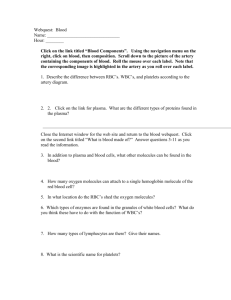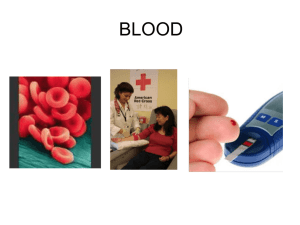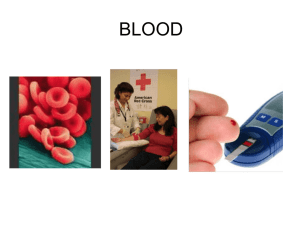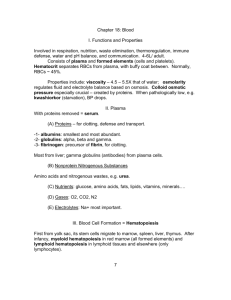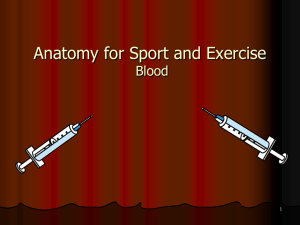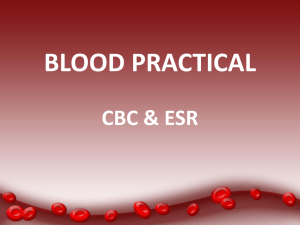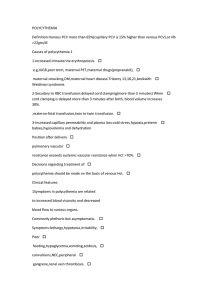hazards
advertisement
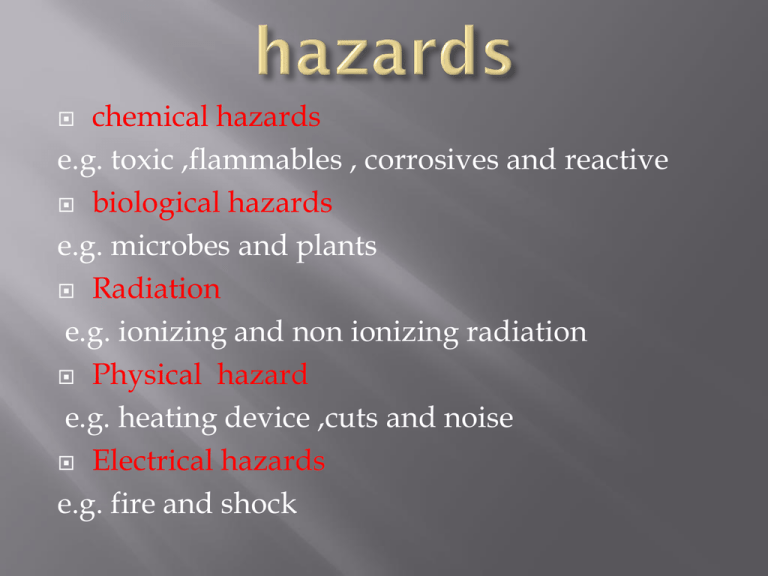
chemical hazards e.g. toxic ,flammables , corrosives and reactive biological hazards e.g. microbes and plants Radiation e.g. ionizing and non ionizing radiation Physical hazard e.g. heating device ,cuts and noise Electrical hazards e.g. fire and shock Safety Precautions: 1- Wear lab coat. 2- Wear Disposable plastic gloves during work. 3- Don’t eat or drink in the lab. 4-Take care if some one has any wounds. 5-Use disposable syringes, needles and lancets. 6-Specimens should be sent to the lab in closed plastic bags, separated from the request forms to prevent their contamination. Safety cabinet First aid bag Storage room for flammables reagents Fire extinguisher The floor should be rough Un bind the wires (A) Venous blood it is common specimen for hematology. collected from anticubital vein and from the dorsum of the hand in obese patients. Needles 19 or 21G for adults and 23 G for children. (B) Capillary blood: It should be used only with infants under 1 year or when it is not possible to obtain venous blood . 1- heel 2- the ball of the middle finger 3-Ear lobe ` Capillary blood is freely flowing So, there is greater risk of transmission of disease and contamination. So, venous blood is more convenient for handling and the results from it are considered to be more accurate. Cellular part: RBC, WBC and Platelets plasma: clear yellowish fluid portion of blood has fibrinogen (cloting factor) so, it clots very fast. Serum = plasma- fibrinogen Serum & plasma To obtain serum should be delivered into sterile tube or tube that has gel. To obtain Plasma should be delivered in a tube with anticoagulant. 1-EDTA (lavender top) Contain: sodium or potassium salt that cause the anticoagulant effect. Chemical action : (remove free Ca ++ by chelation ). Transform Ca ++ to un ionized form it becomes not free (bound calcium) Concentration: 1.5 + 0.25 mg /mL of blood Excess EDTA: ↓ PCV, ↑MCHC, shrinkage of RBC ,slight high platelets count. EDTA Uses: for routine Hematology,blood count ,blood films and platelets count because it prevents clumping. Disavantages: not suitable for coagulation study because it destroys factorV and VIII. Used for: Coagulation studies and ESR. Conc: 9 volume of blood to 1 volume of trisodium citrate for coagulation study 4 volume of blood to 1 volume of trisodium citrate for ESR. Chemical action: it removes free Ca ++ by loosely binding to form a calcium citrate complex 3-Heparin (green top) It is a natural dry substance It is synthesized by the liver It does not alter the size of RBC It is important because it reduce the chance of lysis that occur after blood has been withdraw Chemical action: With the aid of co factor located in albumin fraction of the plasma,heparin neutralize thrombin which is essential for coagulation . Con: 10 – 20 IU per ml of blood. heparin Uses: 1-For red cell enzyme estimation e.g. G6PD 2- For osmotic fragility tests e.g. hereditary elleptocytosis and spherecytosis. 3-for immunophenotyping heparin is Not used for: 1- cell counting because of clumping effect of platelets and WBC. 2- blood smears made from it are difficult to stain clearly with Romanowsky dyes Size numbers Functions Hb is a protein inside RBC . It contains : Haem=iron Globin chain =protein 3 types of Hb Hb A consist of α2β2 Hb A2 consist of α2 δ2 Hb F α2 γ2 In adults the major Hb is Hb A :96-98% Hb A2:1.5-3.2% Hb F: 0.5-0.8% In fetus the major Hb is Hb F. 1- by measurements of its colour 2- by its power of combining with O2 or CO2 3-by iron content estimated by spectrophotometer i.e Cyanmethaemoglobin method Blood + Drabkins solution ↓ Hb Oxidized by Potassium ↓ Ferricyanide Methaemoglobin Combines with potassium ↓ cyanide Cyanmethaemoglobin Measure absorption of color at 540 nm by spectrophotometer. Absorption α concentration Disadvantage: 1-Drabkins solution Contain potassium Cyanide A = reading of Abs of Hb solution 64500 = Mwt of Hb 44 = millimolar extinction co efficient. D = Thickness of cuvette = 1 cm 1000 =conversion factor from mg to gm 10 = conversion factor from mL to dL DF = Dilution factor = 200 Normal Ranges: Men 13 – 17 g/dL Women 12 – 15 g/dL At birth 14-22 g/dL Pregnant ladies 11 g/dl PCV=manual method HCT(Haematocrit)=automated coulter counter PCV: Percentage of a volume of blood occupied by red cells i.e the ratio of the height of red cell column to that of the whole blood sample in the tube. Used for: 1-screening test for anemia or polycythemia (PCV=3Hb) 2- calculate red cell indices Methods: Macro method using wintrobe method which is no longer used in routine use b/c it takes big amount of blood & more time to PPT. Micro method by using capillary tubes with a centrifugal forces of 6000 rpm and 3min. Adv: 1-better backing of RBC 2- Short time of centrifugation PCV units: % or L/L Volume of RBC ÷ volume of whole blood x100 Normal range: men 0.45 + 0.05 L/L (40-50%) women 0.41 + 0.05 L/L (36-46%) infant 0.60 + 0.15 L/L (45-75%)


